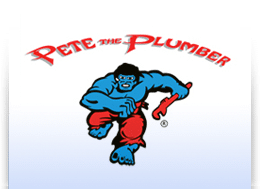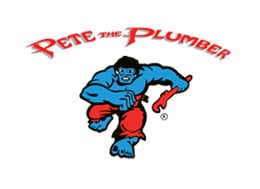So you want to do a few plumbing jobs around the house, ‘cause you’re thinking, ‘How hard can it be?’
Good attitude… we like it. And because you’re up for the challenge, we’re willing to offer a few Do-It-Yourself (DIY) pointers to keep the frustration to a minimum, and the cursing to a dull roar. Some of these pointers are going to seem pretty darned obvious until you look at it from the perspective of a plumbing company that has seen and heard it all. The number of times we’ve had to “rescue” homeowners who didn’t follow these simple basics are too many to mention.
So without further ado, here are five DIY tips to help you keep your sanity while safeguarding the ears of your children.
1. Don’t freak out… it’s just a plumbing job
Most people call in the plumber because they think anything to do with plumbing is going to be too complicated for them to handle, and they get really, really anxious. The reality, however, is that there are plenty of plumbing tasks the average homeowner can do on their own to save money… and they’re really not that stressful if you take the time to figure out what’s going on before you start.
For instance, a leaking water tap is probably nothing more than a worn out rubber washer. A screwdriver and a replacement washer are all you need to do this job, and you save big bucks.
Same goes for a showerhead that is either not spraying properly anymore, or that is leaking from the joint where the showerhead is attached to the shower pipe.
In the former instance, you can either replace the showerhead with a new one, or try cleaning the old one first with calcium remover (like CLR) to save the cost of a new unit. In the latter instance, remove the showerhead, clean off the old Teflon sealer with a toothbrush, and then apply some new Teflon tape in a clockwise direction, followed by the showerhead. Again, you’ve just saved substantially on labour costs.
If you have a plumbing job that needs doing, check out YouTube to see if there’s a video that gives step-by-step instructions about your job. Chances are there is. Then decide whether it’s a job you can handle yourself, or one you need to call in the plumber to do.
If you do go at it yourself, don’t freak out. Slow and steady wins the race in any plumbing job, so take the time to familiarize yourself with what should happen (thank you Internet) and then take your time to do the job right.
2. Turn off the water before starting work
We said these pointers might be obvious, but you really don’t want to be the guy (or gal) who cuts into a water line only to find you’ve forgotten this basic rule. Flooding your home in this fashion will have you kicking yourself for weeks, so take the time to ensure you’ve turned off the water supply.
As a corollary to this pointer, make sure the valve you closed has actually shut down the line you want to work on. Some houses have funny supply systems with multiple shut-off valves, so you want to test the line you’re working on to make sure no water is flowing before you make the big cut. If you want to be certain, shut off the main supply valve coming into the house.
3. Use the right tools
The best way to minimize frustration on a plumbing job is to use the right tools for the job. Obvious, right? Tell that to the guy who subscribes to the school of thought that says a hammer can fix anything. Anyway, having the right tools helps a lot if you want to minimize the chance of breaking something, or of marring surfaces, or aggravation, etc.
For instance, a good set of channel lock pliers is ideal for working with smaller plastic unions because they grip well, and a couple of crescent wrenches helps to minimize marring when dealing with chrome fittings.
With almost all faucets, you’re going to need a Phillips screwdriver. As well, a smaller slotted screwdriver is useful for prying out those worn-out washers.
A socket wrench set comes in handy when attaching a toilet tank to the bowl. Alternatively, a flat wrench of the appropriate size is just as good. In either case, be careful you don’t apply so much torque that you crack the porcelain.
When in doubt about tools, go online and find the job you want to do. Most of these sites, if they’ve taken the time to explain the job, will also explain the tools you need to accomplish it successfully, so take advantage of their insight.
4. Map out the project as you go
One handy trick for making sure everything goes back together properly when you’re working on a job is to have a pad of paper and a pencil handy. That way, as you take things apart, you can write down what went where so that it’s easier to reassemble. Alternatively, you can draw yourself sketches of the same.
Warning!!!! Don’t rely on your memory. The real reason a seasoned plumber can charge as much as he does is because even if he’s not paying attention to how something came apart, he’s been doing this long enough that he knows what’s supposed to come next when it’s time to reassemble the system. You don’t have that knowledge, and unless you have an eidetic memory, you’re not likely to remember how a complicated plumbing system or part goes together, so write it down or draw it out, and save yourself untold aggravation.
5. Plumbing 101
Unless it has some kind of mechanical assistance, the water in your home’s drainage system will always flow downhill, so whatever you do, don’t create backgrade in your drainpipes.
In other words, every time you install a piece of drain pipe in your system, always ensure that by the time you’re finished the job the water is flowing down towards the lowest part of your drainage system. If you don’t do this, the water will not drain properly, and could lead to costly problems.
A torpedo level is your best friend when working on drainpipe installations. If your level is showing your pipe is backgraded, then you need to fix the problem before you can call it a day.
There you have it… five tips for plumbing DIY projects. You can save yourself some dollars by trying to fix the minor things yourself, but remember, if you don’t feel confident you can always call Pete the Plumber, your plumbing superhero, for assistance. We’ll be more than pleased to help.

